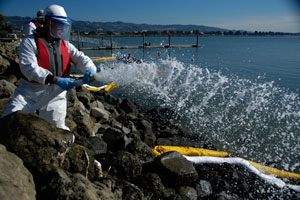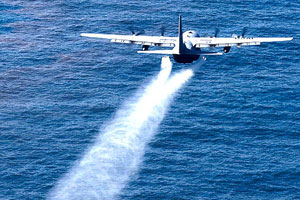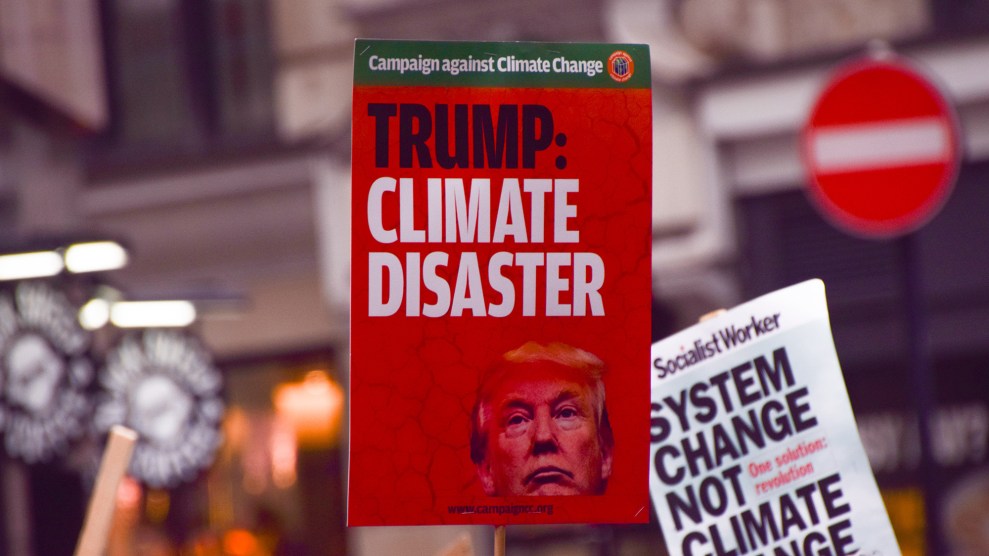
<a href="http://cgvi.uscg.mil/media/main.php?g2_itemId=524487&g2_imageViewsIndex=1">US Coast Guard</a>
So much for the May 26 directive from the Environmental Protection Agency and the Coast Guard calling for BP to slash dispersant use in the Gulf. According to records recenty released by the Coast Guard, BP has exceeded the limits on an almost daily basis since the directive took effect—with the express approval of the federal government.
BP was supposed to limit subsea use to 15,000 gallons per day and “eliminate the surface application of dispersants” except in “rare cases when there may have to be an exemption.” But as we reported several weeks ago, the company is still regularly exceeding both those limits. BP also hasn’t reduced its average use much at all—just 9 percent from the pre-directive average.
In order to surpass the limits imposed by the EPA and the Coast Guard, BP needs to request an exemption from the government’s on-scene coordinator (currently Coast Guard Admiral James Watson, who took over on June 1). Based on exemption requests, which the Coast Guard posted online, the Coast Guard has granted BP permission to surpass those limits routinely—and with few questions, notes Richard Denison, a senior scientist at the Environmental Defense Fund. In the majority of cases, he writes, the federal on-scene coordinator has “accepted without modification the exemption request submitted by BP” and “has simply approved the exemption request by signing and dating it at the bottom.”
A look at the requests and approvals makes that clear. On May 29, the company requested permission to spray up to 19,000 gallons of disperstants over a period of 12 hours, arguing that it had spotted some “dispersible oil” approximately 20 to 30 miles from the spill site; burning or skimming the oil, BP said, wouldn’t be sufficient. The plan was approved without any suggested modification. On June 2, BP asked for an exemption to use up to 6,000 gallons per day on the surface for a whole week, noting that “BP also respectfully requests to exceed these volumes as required.” That, too, was greenlighted.
On June 25, the Coast Guard actually raised the amount approved from BP’s request. BP asked to use 30,000 gallons, and Watson authorized 43,000 gallons. On June 26, BP upped the request again—this time to 50,600 gallons. (The Coast Guard only granted the company permission to use 10,880 gallons that day, but that was still 10,880 gallons more than the directive a month earlier indicated should be allowed.)
The pattern continues through June. The repeated exemptions of course beg the question: What’s the point in setting limits on dispersant use—an acknowledgment that these chemicals themselves present serious environmental concerns—if they’re going to be ignored almost every day?
UPDATE: The EPA sent along this statement regarding the dispersant use: “The goal of this directive was to rampdown dispersant use from peak usage, and dispersant use has dropped by nearly 70 percent. EPA and the Coast Guard took these steps to ensure that BP prioritized skimming and burning and relied on surface application only as a last resort. That prioritization has happened.”












